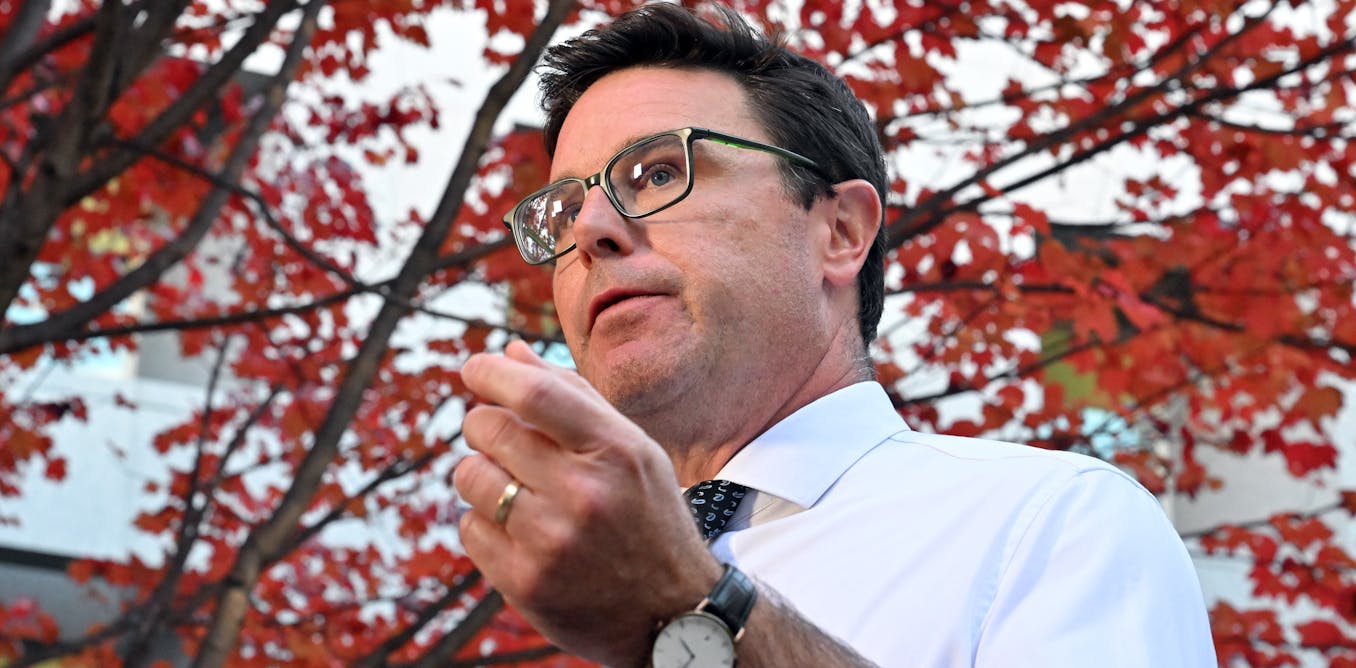Stanford professor on the future of life-saving medicine | Steve Quake
In the video “Stanford professor on the future of life-saving medicine | Steve Quake,” biophysicist and bioengineer Steve Quake discusses the exciting potential of artificial intelligence in understanding complex biological systems. He emphasizes the importance of revisiting the physiology of cells and how they interact to create organ systems, as well as the role of the immune system in diseases like cancer, neurodegeneration, and diabetes. Quake highlights the advancements in imaging and sequencing techniques as well as the advent of artificial intelligence and large language models, which will provide detailed insight into cellular therapy and disease detection. He also discusses the development of cell atlases, which provide unprecedented detail in understanding the molecular characterization of all cell types in the body. Quake’s vision for the future includes using AI tools to predict diseases and engineer cells for novel functions, leading to revolutionary advancements in medicine and earlier interventions and therapies.
Watch the video by Big Think
Author Video Description
What if AI could tell us we have cancer before we show a single symptom? Steve Quake, head of science at the Chan Zuckerberg Initiative, explains how AI can revolutionize science.
Subscribe to Big Think on YouTube ► https://www.youtube.com/channel/UCvQECJukTDE2i6aCoMnS-Vg?sub_confirmation=1
Up next,Harvard professor debunks the biggest exercise myths ► https://youtu.be/n6AwsVGJDOY?si=KTuQHtD5lS3Cvgi8
AI can help us understand complex systems like our cells. better. The Chan Zuckerberg Initiative is committed to building one of the world’s biggest non-profit life science AI computing clusters to help build digital models of what goes wrong in cells when we get diseases like diabetes or cancer and more.
Read the video transcript ► https://bigthink.com/sponsored/future-of-medicine/?utm_source=youtube&utm_medium=video&utm_campaign=youtube_description
We created this video in partnership with the Chan Zuckerberg Initiative.
———————————————————————————-
Go Deeper with Big Think:
►Become a Big Think Member
Get exclusive access to full interviews, early access to new releases, Big Think merch and more. https://members.bigthink.com/?utm_source=youtube&utm_medium=video&utm_campaign=youtube_description
►Get Big Think+ for Business
Guide, inspire and accelerate leaders at all levels of your company with the biggest minds in business. https://bigthink.com/plus/great-leaders-think-big/?utm_source=youtube&utm_medium=video&utm_campaign=youtube_description
———————————————————————————-
About Steve Quake:
Steve Quake oversees a shared, comprehensive strategy across the CZ Science program and technology teams, the CZ Biohub Network, and the Chan Zuckerberg Institute for Advanced Biological Imaging.
His research is at the nexus of biology, physics, and technology development. He has invented many measurement tools for biology, including new DNA sequencing technologies that have enabled rapid analysis of the human genome, and microfluidic automation that allows scientists to efficiently isolate cells for single-cell biology.
Quake is also the Lee Otterson Professor of Bioengineering and professor of applied physics at Stanford University. He joined Stanford in 2005 to help found and lead Stanford’s then-new bioengineering department as it grew to nearly two dozen faculty members. He was an Investigator at the Howard Hughes Medical Institute from 2006 to 2016.
– The power of artificial intelligence is it helps us understand very complex systems that the human brain struggles to do by itself- and the cell is just such a system. We’ve learned a lot over the past decades about the mysteries of the molecules that make up cells, entire genomes sequenced, protein structures solved.
But, we put aside for quite a while the role of physiology of cells, how cells work, and how they interact with each other, how they create organ systems. And now, we have powerful tools to revisit those questions. We’re making a new initiative to build one of the world’s biggest GPU supercomputers
For basic nonprofit research. And it’s gonna reveal a lot about how we develop as organisms, what goes wrong in diseases like cancer, neurodegeneration, diabetes. And we’re making a really substantial effort to understand this in much more detail and discover, hopefully, new ways to treat disease. I’m Steve Quake, I’m a biophysicist and bioengineer.
I’m the Head of Science at the Chan Zuckerberg Initiative, and a professor at Stanford University. Science kind of goes in waves, and we’re just emerging from the genome and molecular biology age. We made enormous progress characterizing what individual genes do, and how they work together in genomes,
But we have no way to predict from the genome what makes all the cell types of the human body, and how the molecules that make them up achieve their functions. There’s many interesting mysteries still to solve. One incredibly important one is the immune system: how we respond to a vaccine,
What goes wrong in autoimmune disease and allergies, and how the immune system may detect incipient disease, such as early cancers. But at the moment, we’re benefiting from an enormous technical revolution in science: novel imaging techniques, novel sequencing techniques, the advent of artificial intelligence, large language models.
These AI models will provide very detailed insight into how to do cellular therapy, which is using engineered cells to cure disease. At CZI, we’re investing in novel approaches to do genome engineering of cells to do much more sophisticated things than current cellular therapies allow,
And also to detect disease as it’s just beginning to happen. A large part of my research of the last decade has been the development of cell atlases. The cell atlas is a molecular characterization of all the cell types in the body, and provides unprecedented detail in how one cell differs from another,
And how they’re changing with age, development, health and disease. We got into the making of the cell atlases by first focusing on individual tissues, and trying to understand the cellular complexity of those tissues, particularly in cancer. And that led us to understand that it would be very useful
To do this across the entire body. The Tabula Sapiens represent the culmination of our efforts making cell atlases. We were able to analyze organs from individual human donors and do a full molecular characterization of them. An absolutely crucial tool in making all the cell atlases
Is the software CELLxGENE, which was developed at CZI. It provides a very easy interface to investigate and analyze complex data. We’re continuing to grow the Tabula Sapiens. At the same time, CZI has been funding the creation of individual tissue atlases around the world. And those are now all being combined
Along the Tabula Sapiens into one usable database that we’re making available to the scientific community, and that’s giving us the power to ask deeper questions about the atlas and the cell types within it. We’re very excited about the promise of large language models and other approaches to machine learning and artificial intelligence
To help us understand the mysteries of the cell. And one thing those models need is very well curated data sets, and large data sets to learn on. And that’s what we’ve been able to assemble at CZI. We’re making one of the world’s biggest GPU supercomputers for basic nonprofit research, and we pulled together
A collection of more than 30 million cells, each of which has 20,000 genes characterized, and they’ve been very carefully expert annotated. It’s great learning material for artificial intelligence, and we can’t wait to see what comes out of that from the scientific community. Over the next 20 years, we’re gonna see profound changes
In how we do science. Many of the things that are expensive and difficult experiments to do now, will be done in silico by computers using the insights we’re gaining from artificial intelligence and machine learning. These AI tools will predict what a single mutation does to cells across the body,
What diseases you’re potentially gonna get, and what will happen as we start expressing different genes in an artificial way in cells to try to reprogram them for new functions. You can imagine many applications of engineered cells in medicine: cells that explore the body, discover tumors in their earliest stages
Before they can be detected by conventional radiology, cells that might explore across the blood-brain barrier, and discover the plaques that cause neurodegenerative disease, and also start to digest those. The applications of these insights will lead to earlier interventions, earlier therapies, and it’s gonna be a revolution in medicine.
About Big Think
Big Think is the leading source of expert-driven, actionable, educational content — with thousands of videos, featuring experts ranging from Bill Clinton to Bill Nye, we help you get smarter, faster. Get actionable lessons from the world’s greatest thinkers & doers. Our experts are either disrupting or leading their respective fields.
Video “Stanford professor on the future of life-saving medicine | Steve Quake” was uploaded on 01/10/2024 to Youtube Channel Big Think


































